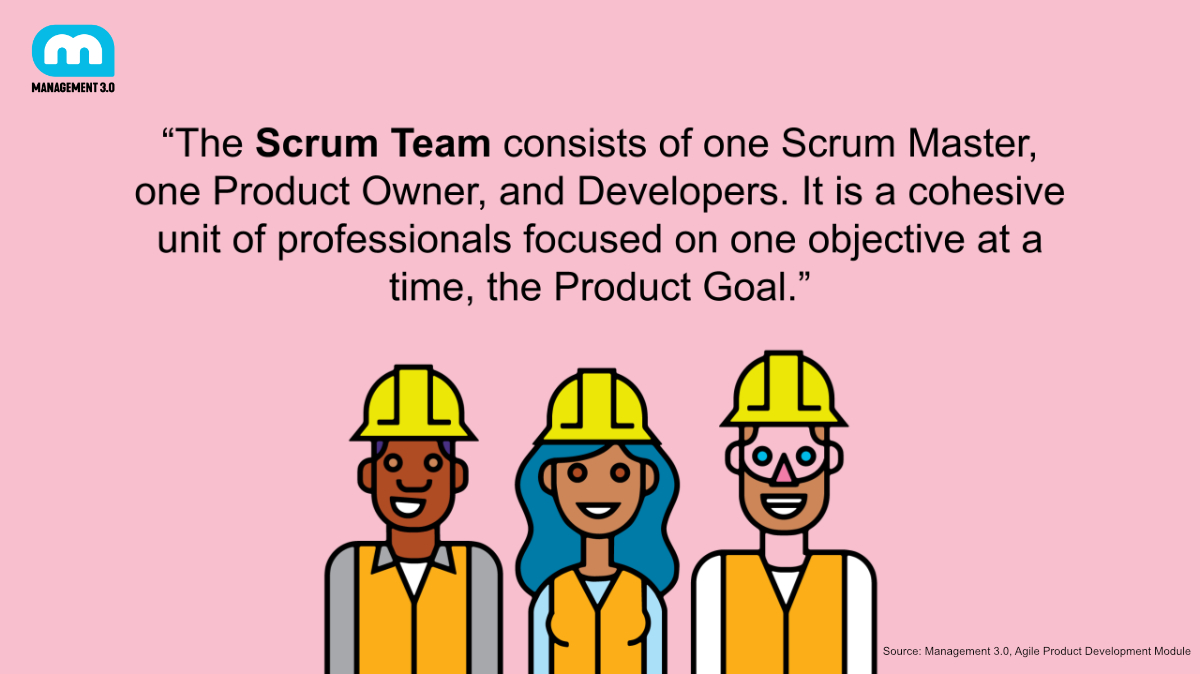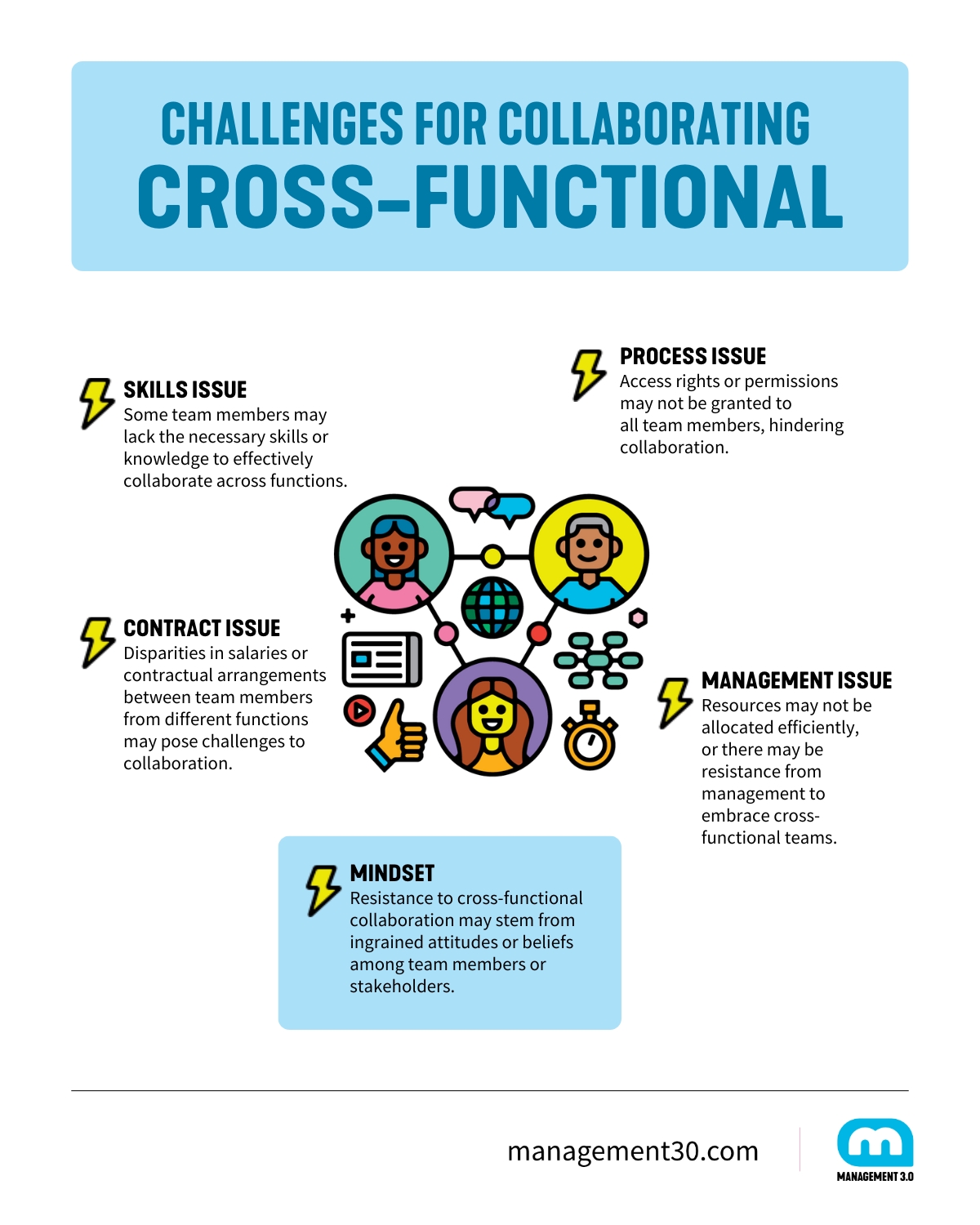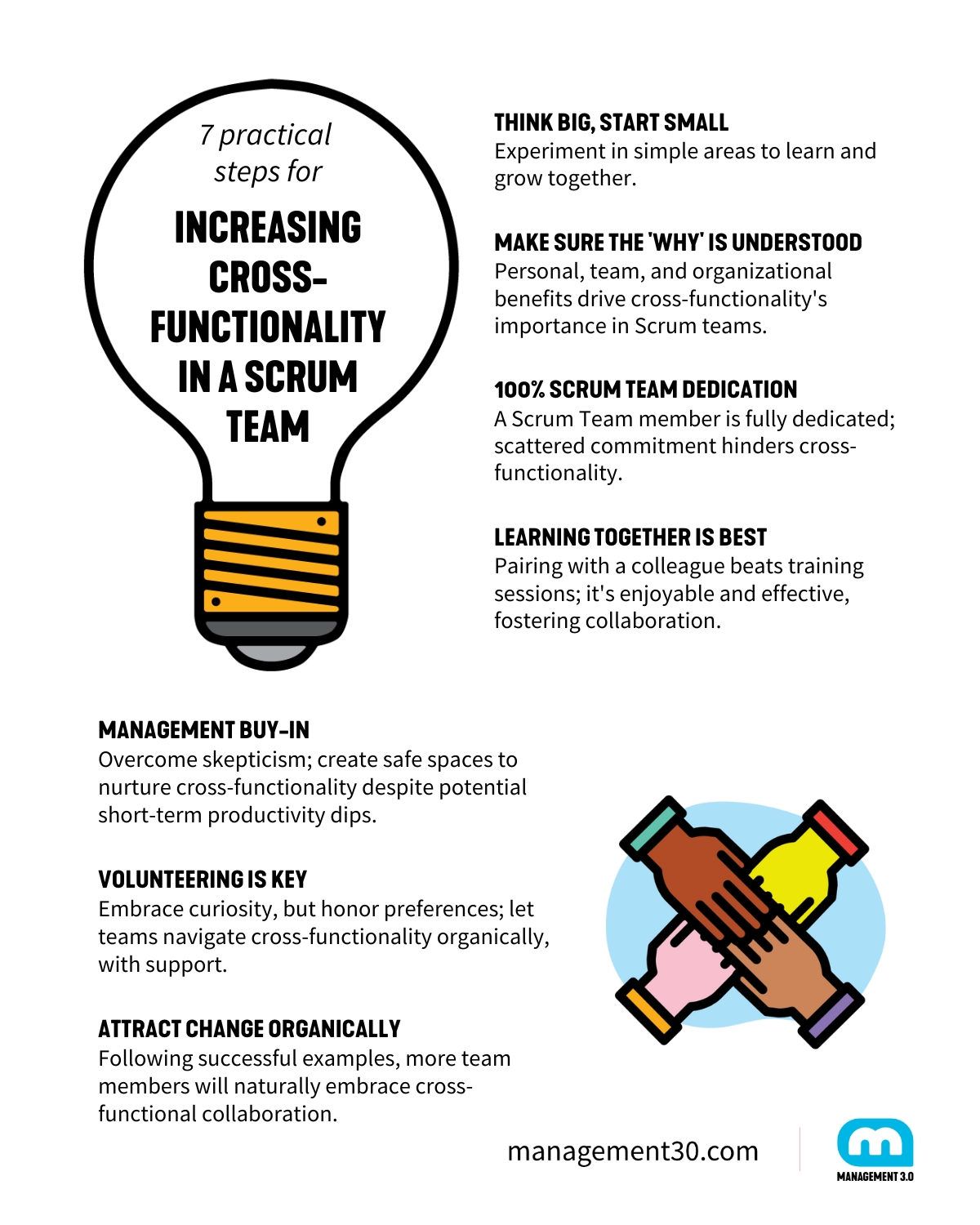by Almudena Rodriguez Pardo, Management 3.0 Facilitator from Germany and a seasoned Business Agility Consultant with over 20 years of operational expertise in the telecommunications industry. Having served in various roles, including senior software developer, quality coordinator, and technical market support engineer, she leverages her extensive experience to provide insights into successful cross-functional collaboration.
Cross-functionality: where it all began
It was 2011 when the multinational company Ericsson decided to introduce Scrum Teams in the R&D organization, and R&D Germany became part of this pilot. It was quite a ‘bold’ step, as so far many companies had introduced Scrum up to a certain extent, but not many multinationals were so far looking into Scrum and Scrum at scale. As a member of the development department, and in my role as Senior SW Developer, I joined one of the first Scrum teams at Ericsson R&D Aachen.
Until this point in time, we had a department writing the software, architects writing the specifications, a huge tester department running the tests, quality coordinators responsible for the quality of the products, and technical writers taking care of the documentation. All of a sudden, all these responsibilities and many more lay on the SCRUM Teams! We were supposed to commit to common goals in a self-organized modus…with a cross-functional way of working. To make matters worse, the code ownership was distributed: there were no more software blocks owners, but any Scrum team could access any of the 2000 software blocks of our products. We were absolutely convinced this could never, ever work!

But it did. For the first, everybody in the Scrum team stuck to their turf: software engineers were developing following the specifications written by the architects while testers were testing the code…all within the Scrum team. The daily Scrum was a wild mixture of information on the different responsibilities, until little by little the synergies began to arise.
First steps towards cross-functionality
First of all, there were tasks which had been done so far by specialists outside the team, like quality and documentation: these activities were lying around on the Team board waiting for a ‘volunteer’, and we, the Scrum team, accepted our responsibility. Some of the Scrum team members began taking care of those ‘tasks’ none of us had any expertise in. By pairing with the specialists we managed to get the knowledge needed in order to complete the required work, growing some skills we did not have before. To be very honest, for most of the cases, the Scrum team members did not enjoy doing ‘other things’ outside their own turf, but we had understood the responsibility we had as a Scrum team to complete our work, with ‘everything’ and ‘everybody’ involved. The basis for cross-functionality in the Scrum team was in place.
Next big step ahead was to spread the cross-functionality within the Scrum team to the different areas of knowledge of each Scrum team member: the most obvious need was quickly identified! We observed quite a few bottlenecks for verification and testing, which made us realize that if we wanted to increase the speed of delivery and the effectiveness of our team, we needed to move on! Could really software engineers take care of testing, and even testers write the software?
The answer is ‘yes’.
Meaning: What is cross-functional collaboration?
Cross-functional collaboration involves individuals from diverse functional backgrounds working together towards a shared goal or project, breaking down traditional departmental silos. It requires team members to step outside their primary roles, collaborate across functional boundaries, and share knowledge and expertise. This approach encourages a holistic approach to problem-solving, fosters effective communication and teamwork, and ultimately leads to more innovative and efficient outcomes within organizations.
Cross-functionality: we made it happen
We, the software developers in the Scrum team, began looking into the testing environment, learning the functionality of the testing tools, cloning the testing repository, and pairing with senior testers to understand the verification processes. After several sprints, we as a Scrum team were able to ‘break through’ the bottleneck, and our workflow became smooth: by software engineers taking care of some of the tests our reliability and speed as a Scrum team increased. And yes, we were even enjoying working in different areas and trying out other responsibilities. I later learned that this was called ‘t-shape.’

Challenges: What are problems of cross-functional working?
As a business agility consultant is part of my job, and the one I really enjoy, to bring these experiences to our clients: it is always a beautiful challenge to create out of a bunch of specialists who are working shoulder to shoulder, a cross-functional Scrum team.
I hear quite a few reasons why cross-functionality should not be applicable:
- sometimes it is a skills issue (“we don’t know how to do it”)
- sometimes it is a process issue (“we don’t have access rights”)
- sometimes it is a management issue (“resources should be allocated and distributed efficiently for their main skills”)
- and sometimes it is even a contract issue (“what do we do if the testers and developers have different salaries?”).
At the very end, with very few exceptions, it is all about mindset.
For sure, there might be cases where some activities require very special skills which only concrete members of the Scrum teams have: these can be the case where sensitive data is involved, legal regulations apply, or very specific knowledge. We did have a customer where the development of algorithms could only be done by mathematicians, or some documents could only be signed by the colleagues with a lawyer degree. But experience shows that those cases are not necessarily the wide majority.
It is still the mindset.

Benefits: Why is cross-functionality important in an organization?
Over decades being a specialist meant higher recognition, higher salary, higher status…the HR departments were looking for the top experts and long titles meant excellent career chances. This has radically changed! Nowadays Scrum teams require team players ready to take any challenge in order to support the team achievement, independent of the individual needs.

In the 21st century, organizations worldwide face two main challenges: the higher complexity in the industry and the velocity of change. It is not the big fish eating the small fish anymore…it is the quick fish eating the slow fish!
As a consequence, we keep observing many companies where the specialists are the biggest bottleneck, and these are the employees slowing down the Scrum teams. And, nowadays we cannot afford being slow.
Here is where the collective intelligence of a Scrum team comes into the game, and the reason many Scrum transformations have managed to accelerate value delivery in a VUCA environment.
So if we want to thrive as an organization, we need to move from our ‘champions’ philosophy with highly-paid specialists to cross-functional team members ready to take any task in the team while saying ‘not sure how to do this, but I will take a look! Can anybody help me?’
Yes, quite a change.
Strategies: How to foster cross-functional collaboration?
Well, how do we get started?
What is the best approach to increase the cross-functionality in a Scrum team? Here we have the practical steps our company recommends, based on my own experience as a member of Scrum teams, as well as the learnings we had in different organizations:
Think big, start small
We can have a clear goal of where we want to go, but don’t attempt a ‘big-bang Scrum team cross-functionality introduction’. Remember, it’s all about mindset, and changing mindsets takes small steps. Try small experiments; begin in some ‘uncomplicated’ areas where people can learn and make mistakes. Because when you start running tests after years of writing software, you’re bound to mess up Jenkins a couple of times at the beginning. I know what I’m talking about.
Make sure the ‘why’ is understood
What is the value of not only doing the tasks I excel at but also participating in activities where my colleagues excel? We need to continually emphasize the importance of cross-functionality in Scrum Teams, ensuring that everyone understands the benefits for themselves, the team, and the organization.
100% Scrum Team dedication
When we say ‘member of a Scrum Team,’ we assume that this person is fully committed to the team. They are an integral part of it. In my experience, attempts to foster cross-functionality with individuals spread across three or more Scrum teams have not proven successful.
Learning together
Of course, you can send the Scrum teams to training sessions, but in my experience, sitting together with a colleague is the best way to learn something new. So, grab your cup of coffee, pick up a chair, and sit beside your colleague to learn from their work process. In an online setting, simply share your screen. Pairing is fun!
Management buy-in
Sometimes, you hear managers saying that pairing is nonsense because two people are doing the work of one, which, from the resource allocation point of view, is very ineffective. Alternatively, another customer attempted cross-functionality once, and after one sprint, they noticed a drop in productivity, leading them to abandon the approach. Scrum teams require a safe environment to develop cross-functionality, and yes, it takes time. Indeed, the Scrum team might experience reduced productivity for some sprints. Managers must actively support these initiatives and create the necessary safe environments for them to flourish.
Cross-functional collaboration requires a leadership style, read on about leadership skills for fostering cross-functional teams in this article.
Volunteering is key
In any Scrum team, there are very different profiles. This was also the case for our Scrum team at Ericsson. So, we had some team members curious about ‘trying things out’ and looking into each other’s areas of expertise. On the other hand, you might encounter individuals who are not keen on cross-functionality and prefer to stay in their ‘well-known’ area of expertise. We need to respect this! Don’t try to force cross-functionality onto teams by setting up metrics like individual goals for cross-functionality; this can lead in the wrong direction. Instead, let the Scrum team members, with the support of the Scrum Master, find their own path.
Attract change organically
Listening to the insightful Esther Derby speak about ‘change by attraction’ provides guidance for further developing cross-functional skills within Scrum teams. As certain Scrum teams achieve ‘low-hanging fruits’ and share success stories of cross-functionality, additional team members will likely be drawn to embrace this collaborative approach.”

Cross-functionality is not rocket science. Actually, it is amazingly simple! If we want to have high-performing Scrum teams which can solve the challenges of your organization, in an autonomous, flexible, self-organized manner, cross-functionality is key!
I had the honor of being part of a cross-functional Scrum team, and this experience is what I take with me to my customers.
Cross-functionality within Scrum teams is effective for the needs of the company, it is productive for the needs of the business, it increases team reliability, thrives the Scrum team maturity, it motivates the Scrum team…and it is fun!
Encourage your teams to give it a try! Establish a clear ‘why,’ ensure the Scrum teams are committed, provide opportunities for team members to learn from one another, create a safe environment, involve management, and let the initial pilots inspire the rest of the teams. By following the tips outlined in the article, I assure you, you won’t regret it.
You want to hear more? More information on our experiences regarding cross-functionality in Scrum Teams at my keynote Hustef Budapest 2018

